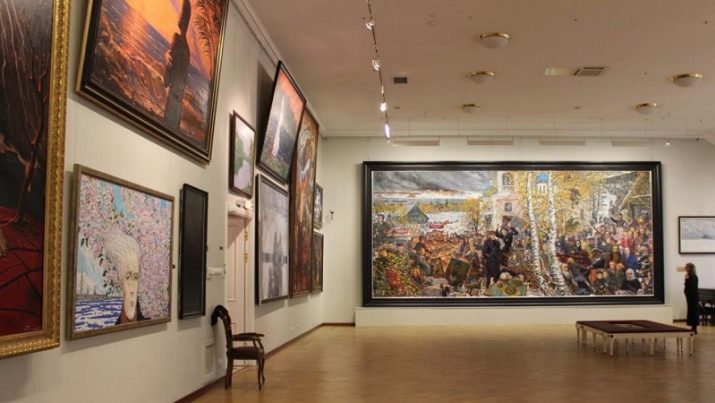Storytelling: what is it, what is it, how is it applied in practice?

You can get into history, you can get stuck, or you can make money on it. This story is called storytelling. This article will tell you what it is and how to apply it in everyday life.
What is storytelling?
Translated into Russian, these are stories. In simple words, storytelling can be defined as conveying certain information through vivid, memorable short stories. The format can be different: from a quatrain to a fairy tale.
Storytelling is an art in which different styles are intertwined. the main objective – make sure that the topics that need to be covered are deposited with the audience, as they say, in the sub-core.
The most common genre where storytelling is used is advertising.

Let's take, for example, the videos of the MTS operator with Dmitry Nagiyev. Each of them is a short film about the life of an artist beloved by millions. The viewer experiences with him some episodes of life and remembers them, as well as the fact that there is always a certain mobile operator next to Nagiyev. The circle of consumers of the product of a digital company is quite wide, and therefore the content of the videos is very diverse.
When the hero is captured by the series, the housewives immediately rush to join Dmitry and take advantage of the company's lucrative offer. When he comes to his old friend's dacha and offers to connect satellite TV, pensioners are already dialing the number of their children so that they urgently buy a plate.
This is a form of theater in which a short but very emotional performance is performed that affects the feelings of the audience.... A handsome knight who rides a white horse to his princess just because she used an expensive perfume in the video encourages millions of girls around the world to buy the same. We tend to believe in fairy tales, and sellers of goods and services cannot take advantage of this.
A fairy tale should have a happy ending, so in storytelling, the ending should be memorable. It can be used not only to promote a company and products on the market, but also to disseminate any information that needs to be conveyed to others.

Peculiarities
A storyteller must have the gift of persuasion. His ideas should be clear to everyone. Whether he explains the benefits of using a washing vacuum cleaner or the delights of living in an eco-neighborhood, his job is to "hook" the audience. It's one thing if we just hear that a beautiful house is being built from high-quality materials in some quiet place, it is another thing if we see a happy family living there.
So they all cook breakfast together, go for a walk, go to the hospital to meet their beloved wife and mother with a newborn. Without realizing it, we are already striving to become their neighbors. And we already think less about the cost of housing in this area, its remoteness, and so on. We are driven by encouraging positive emotions. Any storytelling should trigger them.
When we are told that this sausage is made from selected meat, it is quite possible that next time we will buy just such. And if this product becomes the main one at a family celebration of a certain artist, the likelihood of its acquisition increases significantly. We no longer remember the name of the one made from high-quality raw materials, and the brand of the one that delights guests at the wedding, we will not forget for a long time. It's like "Shebekinsky" pasta. There is hardly a consumer in our country who does not know this brand. And all thanks to quality storytelling.
Or we plunge into the history of the creation of a grocery product, feel the aroma of coffee, rush for the second stick of Twix and in all seriousness try to understand which one is for tea and which one is for coffee.

Writing storytelling is like writing a gripping blockbuster. Only in a very succinct form.
Structure and rules
In both a good book and storytelling, the foundations are built on the principles of universal human values. They consist of vivid pictures from life, understandable to everyone. The scheme is simple: intrigue, scandal, investigation... Moreover, it is not necessary to use all 3 components. The main thing is to lure the audience into your networks.
If you start telling that such and such a cream will make a woman's skin younger, perhaps you will be believed. If you share your personal experience and "confess" how long you suffered from the imperfection of your face, and now they cannot take their eyes off you, then the line for your product will line up much faster. It is proved that people on emotions capture and remember up to 80% of information, dry statistics, even verified to the hundredths, will remain in the memory of only 5-10% of consumers. And this applies not only to advertising.

Where is it used?
We have already talked about how storytelling is used in advertising. Undoubtedly, its role in sales is much greater than in any other industry... However, it can be useful for more than just business. For example, in education, storytelling will help to interest the child... This is a great way to diversify the most boring activity. It's one thing if a teacher gives an academic lesson, it's another if he makes a small but bright performance out of it.
Magic, which is easy to catch even the most ordinary student, is simple. Tell him how your life has changed since you mastered chemistry, and instead of boring experiments, arrange a magic show, and now yesterday's poor student dreams of becoming Mendeleev. In the library, "push" the child to a shelf with stories about the lives of wonderful people - he will immediately have something to strive for.Academic performance will increase in the shortest possible time.
In the marketing services of gadget manufacturing companies it's not for nothing that so much attention is paid to the ability to create stories using phones and tablets. Go to any Instagram page you visit. You will see that people are attracted there not only by the beautiful pictures, but by their colorful descriptions. Who needs Volochkova's twine in the gym, but on the ocean shore, where the beautiful Anastasia spends her vacation with her mother and daughter, it is much more piquant and interesting.
The stars are not sharing their secrets with us because they have no one else to talk to. Our focus is their money. It can be obtained by those with the gift of a storyteller.... Remember the same Munchausen. He evoked delight in someone, anger in someone, in someone a feeling of compassion, but no one remained indifferent to the hero of Oleg Yankovsky and Rudolf Erich Raspe. Likewise, a storyteller must hook the audience on his charm.

Views
Since storytelling can be used in various spheres of life, there are several options for creating it. It all depends on what exactly you want to achieve with your storytelling. Increase sales, improve grades in your son's diary, or get your spouse to give you an expensive gift, so much so that he himself will want it more than you.
So, let's take a look at all types of storytelling.
Classical
Involves a story about a real or fictitious situation. It's like a short documentary. Check out what I did last summer. As a result, I became smarter, richer, more beautiful, and so on. If you don't want to talk about yourself, use the name of a certain character or famous person.
Your goal is to make the hero's stories believe. The audience must begin to experience it with him.

Visual
A story based on photographs, videos, and even animated films. Any information wrapped in a beautiful and vivid visual wrapper becomes even more exciting.
If you start telling the love story of Napoleon and Josephine, it will certainly arouse interest, and if you accompany it with images of the beauty and the French emperor, dilute with views of the palace, pictures of battles, battles, your audience will immediately expand.
Organic
A story that will tell itself after a person learns some information about it. This kind of storytelling makes our brains work in the direction the speaker wants. With its help, we get a certain vector along which our mental process operates further. A certain the picture on the screen leads us to create an image in the head.
Social
It is often used in word of mouth. Gossip, rumors and speculation... The life of the stars or the neighbor - it doesn't matter. Social storytelling is designed to create an image of a person and is based on unverified but highly believable stories.

Digital
It is used, as you might guess, in the virtual world. It is with the help of digital storytelling that we can visit the theater without leaving home, if, of course, its employees were not too lazy to create a virtual tour. Video reviews of resorts, hotels are also digital storytelling.
Lectures and lessons on the Internet are also often created using this kind of "bait".
Museum
Not everyone can visit the Louvre, but anyone can discover its treasures via the Internet. Virtual tours of museums have long been popular in the virtual world. In addition, they are used when presenting exhibits "live".
For example, in Penza there is a museum of one painting, unique of its kind. Only one canvas is exhibited there. But his screening is accompanied by a video story about the creation of a masterpiece, the history of the artist and what he portrayed. The viewer does not just get to know the work of art, he seems to be involved in its creation, imbued with the mystery of its birth and forever remembers that "The Ninth Wave" is the creation of the great marine painter Aivazovsky.

Innovative
A non-standard method that is used to improve the level of knowledge of the company's employees. New developments and the most daring and difficult scientific research are told to them in the form of stories... In the same way, you can diversify lectures, for example, on quantum or nuclear physics.
Transmedia
The Harry Potter story is perhaps one of the most successful attempts at transmedia storytelling. The book about the little wizard quickly won the hearts of people all over the planet. It will soon be continued. And then it spreads in the media space. New films and computer games appear.
We already hear about Harry Potter "from every iron." This is transmedia storytelling - series, not only multiplied by numerous episodes, but also distributed throughout the media space: various Internet sites, television screenings of both the film itself and numerous news about it and its author - the outstanding English master of storytelling, J.K. Rowling.
Interactive
A story with a sequel that the audience chooses. This kind of storytelling implies direct participation in the story of the one who gets to know it... The creators of the series, for example, ask the viewers to decide what the next episode will be. They can be offered several options or come up with their own happy ending. The main thing is to involve the person in the process of the emergence of the story.
This not only expands the circle of "interested" persons, but also often facilitates the work of scriptwriters. Thousands of fans of their work help them. And they do it absolutely free. As a fee, they are only sometimes promised a prize for the most unexpected plot twist. But more often than not, for people to feel like Spielberg, even for a few hours, is already a reward in itself.

Methods and techniques
Whatever type of storytelling you use, whatever techniques and tools you use, all stories must meet the following requirements.
- Decide what you want to tell and show. What is the purpose of your storytelling?
- The meaning of the story must be clear... Anyone can write its ending, if desired.
- A story should evoke emotion... It doesn't matter if it's positive or negative. It is necessary to create something that will be remembered. The transition from extreme to extreme, from tears to joy and vice versa. Tragic accidents or, conversely, happy coincidences will swirl any consumer in a whirlwind of feelings.
- The story must generate wild interest in the audience.... People will want to know what's next for the heroes.
- Not bad, if with the help of your story a person can learn something new, replenish the piggy bank of their knowledge.
- Storytelling has no target audience. The story should be clear to everyone, regardless of education level, age and personal preference.
- The story must have a clear structure... First birth, then growing up, then death. People don't have to figure out anything for you if your goal is to create selling storytelling.
- Use the surprise effect... Insert the most unpredictable events into your stories.
- Find a hero... History cannot be impersonal. She should talk about a specific person or group of people.
- Give your hero superpowers... Create insurmountable obstacles for him, and then compose how he copes with them. The winner commands respect.
- Change the look of your hero... It's like in a fairy tale about an ugly duckling. As he grew up, the duckling evoked different emotions. And the more there are, the better for storytelling.
- Build up the atmosphere... Hurricane, storm, sudden power outage, collapse of the ceiling - all this will only help to draw public attention to the story.
- Uncover secrets... Add intimate moments to the story. This will bring you closer to your audience.
- Provoke... Your story should motivate a person to act: make a purchase, order a service, gain new knowledge. The person shouldn't get stuck on your story. He must want to change.
With the correct use of all technologies, your business will certainly go uphill, lectures (classes, lessons) will become more instructive, thousands of new subscribers will appear on pages in social networks, and advertisers will follow them.

How to learn?
In order to write, you need to read more. This common truth needs to be learned by every author. His main exercise for developing his skills is acquaintance with books of different directions and styles.... For advanced training, it is not bad to take a special course. This can be done on the job by attending a virtual lesson.
No learning is possible without broadening one's horizons. More often "spy" on competitors, do not hesitate to "borrow" history from friends, acquaintances, colleagues and even enemies. The brighter the images, the more attention they will attract. And then you will have the title of the protagonist of the advertising campaign, the pedagogical community, the conqueror of the public's attention.
And one more piece of advice. Never hide from your audience... Your reader needs to know who exactly is telling him the story. He must understand who he trusts. Reveal to him information about yourself as much as possible - gender, age, education, financial and marital status.
After all, you are a master of storytelling, and therefore it will not be difficult for you to create an image for yourself that will turn millions of admiring eyes and minds towards you.









